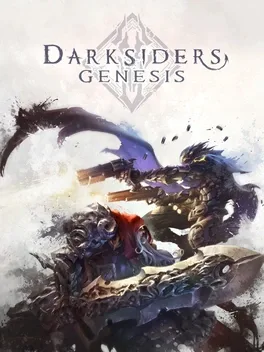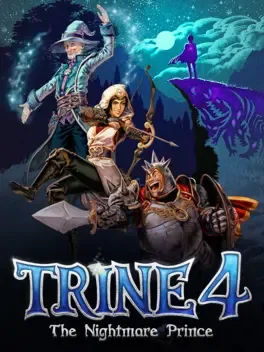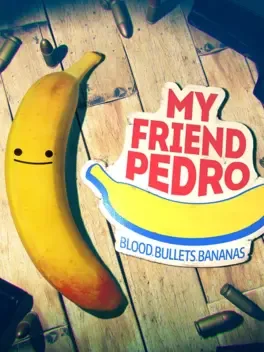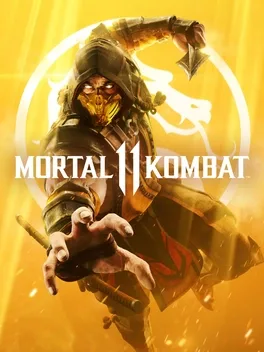Mitchell Saltzman
This author account hasn't been claimed yet. To claim this account, please contact the outlet owner to request access.
Writing For
Latest Reviews
When Elden Ring Nightreign is played exactly as it was designed to be played, it’s one of the finest examples of a three-player co-op game around – but that's harder to do than it should be, and playing solo is poorly balanced.
Doom: The Dark Ages may strip away the mobility focus of Doom Eternal, but replaces it with a very weighty and powerful style of play that is different from anything the series has done before, and still immensely satisfying in its own way.
Fatal Fury: City of the Wolves is a triumphant revival of one of the pioneers of the 2D Fighter that doesn't land every strike it throws, but hits with all of the most important ones for figthing game fans.
Darksiders Genesis may lack the polish and flair of its numbered brethren, but make no mistake: this is still a Darksiders game, and it’s one of the best. There’s a really strong balance of great combat, clever puzzles, rich exploration, and excellent progression mechanics that keep its momentum going strong through its entire 15-hour run time. I wouldn’t say I think this new style should be the new standard for the Darksiders series going forward, but I do hope this spinoff isn’t a one-off because there’s a ton of potential here to explore.
WWE 2K19 looked like it stopped the downward trend for the series, but WWE 2K20 doubles back, breaks its ankle, and tumbles down the slope. Fundamental parts that felt totally fine in WWE 2K19 now feel clumsy, the impressive roster of 238 superstars is all but meaningless when a majority of them look like they crawled out of a PS2-era wrestling game, and while 2K20’s MyCareer mode offers a better wrestling story mode than most previous WWE 2K games, that’s a low bar to clear – it’s still saddled with bad progression and a plodding pace. This is a mess that 2K needs to clean up in a hurry.
Trine 4: The Nightmare Prince is a sequel that plays it very safe – which, in this particular case, is for the better. Coming back to the traditional style of co-op gameplay and puzzle solving that made the first two games so delightful is exactly the kind of refocusing that the Trine series needed after the misfire of Trine 3. Some lackluster puzzle designs, technical issues, and a lack of difficulty stand in the way of it overtaking Trine 2 as the best of the series, but Trine 4 still remains a shining example of how cooperative gaming should be, and is one of the most gorgeous looking 2.5D games of 2019.
Like the John Woo movies that it successfully emulates, My Friend Pedro is all about the action – and that action is excellent. The slow-motion gunplay, fantastical stunts, and score-attack-driven mechanics all work together to create one hell of an adrenaline-filled ride, even if it doesn’t give you much reason to come back to it once that ride is over.
It’s a rare fighting game that hits just about every note as strongly as Mortal Kombat 11 does. Everything from its methodical and deep combat to its fantastically absurd story mode and its rock-solid netcode, right down to its extraordinarily comprehensive tutorial is absolutely exceptional. It’s only when you get into its drawn-out progression that it trips up: the keys to unlocking Mortal Kombat 11’s rich vault of customization options are locked behind the frustratingly gimmicky and grindy barriers of the Krypt and Towers of Time. This series continues to prove that there’s real fighting depth beyond its notoriously gory Fatalities, and this one in particular stands out as a spine-ripping good time.
Katana Zero’s time-bending samurai action is the star of the show here, but its unique presentation and entertaining dialogue go a long way in supporting a plot that suffers from feeling like it’s saving its best ideas for a sequel. As action games go, Katana Zero’s shorter length makes it a quick fix, and I’ll no doubt suffer withdrawal while I wait for the next hit.
There are some surprisingly good fighting game mechanics in Power Rangers: Battle for the Grid, but there’s very little meat on that skeleton. A well-rounded roster of fun, nostalgic characters is represented poorly by dated graphics, slapdash presentation, and – most damningly – a lack of meaningful single-player content, other modes, characters, and stages. It’s a solid start for developer nWay’s first foray into the fighting game genre, but there’s a long way to go to make Power Rangers a contender in a space that’s become crowded with high-quality games.









